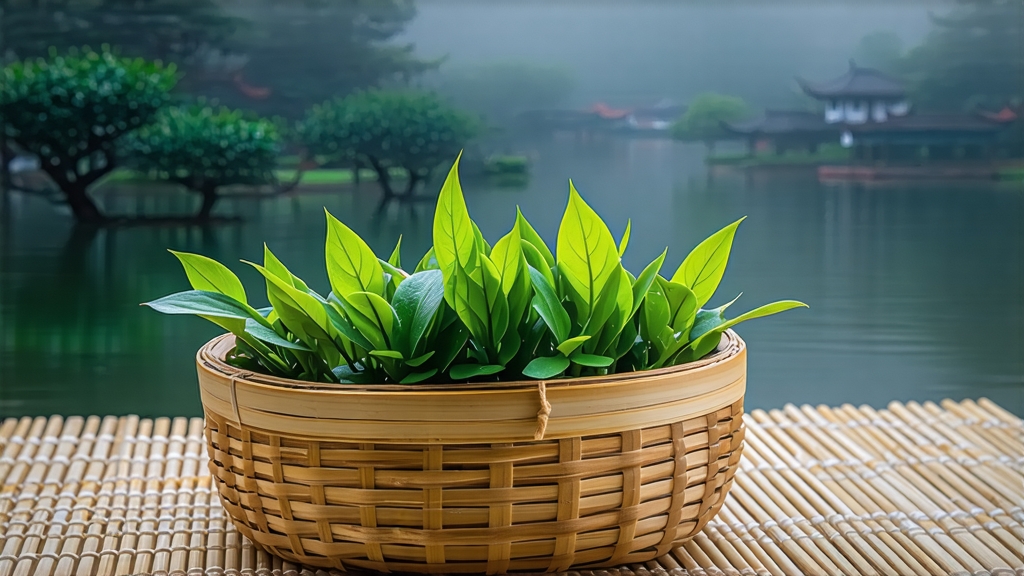
Longjing, literally “Dragon-Well,” is the most celebrated among China’s several hundred green teas, a name so iconic that travelers often mistake it for a brand rather than a leaf. Yet Longjing is neither a trademark nor a single garden; it is a mosaic of micro-terroirs, dynastic lore, and hand-forged craftsmanship that turns one spring morning into a cup that tastes like liquid jade. To understand Longjing is to listen to the echo of Hangzhou’s West Lake, to watch a tea master’s wrist flick above a hot wok, and to feel the cool March breeze that carries the first flush of buds from quartz-rich soil to porcelain gaiwan.
History whispers through the hills surrounding West Lake. The earliest written record appears in Lu Yu’s “Classic of Tea” (760 CE), but legend pushes the origin further back, to the Eastern Jin dynasty when a drought-ending dragon was said to have dwelt in a well near today’s Longjing Village. Imperial favor crystallized during the Qing: the Qianlong Emperor, while visiting the region, was so enamored of the tea plucked before the Qingming festival that he conferred upon eighteen bushes the status of “imperial trees,” a designation still honored each spring when local governors pick the first handful of leaves in ceremonial tribute. Those 18 bushes now stand fenced yet unpruned, their tiny yield auctioned for sums that exceed the price of gold per gram, a symbolic reminder that Longjing is as much cultural capital as beverage.
Geography grants the first layer of distinction. Authentic West Lake Longjing must grow within the protected zone of 168 square kilometers encompassing Hangzhou’s Xihu District. Within this radius, micro-appellations such as Shífeng (Lion Peak), Méijiāwǔ, Wēngjiāshān, and Hǔpáo (Tiger Running Spring) offer subtle variations. Shífeng’s purple shale soil lends a mineral bite, while the higher altitude of Méijiāwù wraps leaves in nightly mist, building amino acids that translate into sweeter umami. Beyond West Lake, Qiantang, Yuezhou, and even provinces like Sichuan produce “Longjing-style” tea, but connoisseurs liken them to Burgundy grown outside the Côte d’Or: pleasant, yet missing the inexplicable terroir whisper.
The cultivar itself matters. While the generic Camellia sinensis var. sinensis populates most Chinese greens, Longjing relies on specific clones—Longjing #43, Longjing Changye, and the heirloom Qunti Zhong. Clone #43, developed in the 1970s, germinates earlier, yielding a brighter jade color and chestnut sweetness, whereas Qunti Zhong, the old-growth “group variety,” grows slowly, concentrating savory depth and a faint orchid finish. Farmers often plant both, staggering harvests and hedging against spring frost.
Plucking is poetry written in motion. The standard is “one bud with one unfolding leaf,” about 2.5 centimeters long, requiring pluckers to snap the stem without fingernails to avoid oxidation bruises. A skilled woman can gather 1,200 grams of fresh leaves between dawn and lunch; after firing, that shrinks to a mere 200 grams of finished tea. The most coveted picking window spans Qingming (early April) to Grain Rain (late April), when amino acids peak and tannins remain gentle. Pre-Qingming Longjing, dubbed Mingqian, is the Beaujolais Nouveau of green tea—delicate, fragrant, and fleeting.
Withering, though brief, sets the aromatic stage. Fresh leaves are spread 2 cm thick on bamboo trays for 2–4 hours, allowing surface moisture to evaporate and grassy volatiles to disperse. The real alchemy happens in the wok. A traditional iron pan is heated to 80 °C, brushed with tea-seed oil, then cooled to 60 °C. The master slips on tawny calfskin gloves, not for protection but for sensitivity, and begins the ten-step ballet of pàn (rolling pressure), tuī (push), táo (toss), and yā (press). Each motion must last no longer than three minutes before the temperature drops, demanding rhythmic alternation between wok and bare hand. Over 25 minutes the leaf loses half its weight, flattening into the signature sword shape that mirrors the profile of West Lake’s willow leaves. When done correctly, the surface appears matte jade with microscopic white hairs, the “lustrous frost” prized by graders.
Drying finishes the